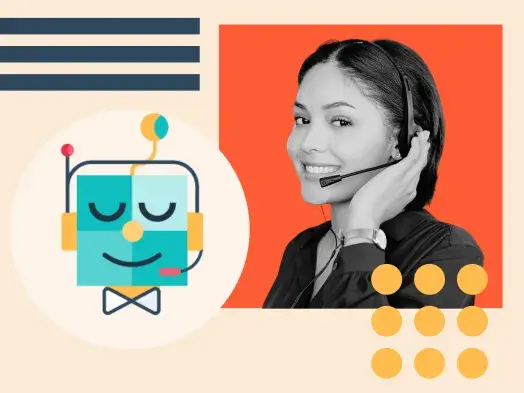How can your organization improve its contact center operations using AI? I‘ve gathered case studies and advice from AI experts. Here’s what you need to know.
Table of Contents
- What Is an AI-Powered Contact Center?
- Benefits of AI for Contact Centers
- AI Contact Center Use Cases
- How to Implement AI at Your Contact Center
What Is an AI-Powered Contact Center?
A contact center refers to the part of every business that manages customer communication. Traditional customer center channels include call centers and email support. AI-powered contact centers are using AI to improve their efficiency.
The companies that benefit most are the ones using AI to help deliver exceptional customer support (not thoughtlessly outsourcing human agents). Implementing contact center AI has to be done with care, and there are serious consequences if it's done incorrectly.
Feeling overwhelmed with using generative AI? Get our free guide on using ChatGPT for work.
Benefits of AI for Contact Centers
Our annual State of Service report found that 86% of leaders believe that AI will completely transform the experience that customers get with their company.
But what exact benefits can companies expect if they invest in their contact center AI? Here's what industry professionals and our independent research say.
1. Improved Customer Experience
Sloppy AI initiatives will make your customers run for the hills. But leverage AI effectively, and you'll improve customer experiences. For CFAB Globa, an industrial equipment manufacturing company, the improvement has been measurable.
“For any company, implementing AI for customer service can streamline operations, reduce costs, and boost the customer experience,” shared Todd Cleppe, head of engineering at CFAB Global. “The key is starting small, piloting AI for basic, repetitive tasks, and expanding from there based on the results.”
Todd shared that he‘s implemented AI for call routing, analyzing customer requests and responses, and providing automated resolutions. CFAB Global’s call center used to manually route 80% of calls; now, the contact center AI handles initial routing for simple requests like order status or tech support. Todd shared these results:
- Call center load has been reduced by 50%.
- Customer satisfaction is up 15%.
- Call resolution times have dropped over 30%.
- About 30% of customer contacts are now handled automatically.
2. Improved Agent Productivity
Contact center AI helps improve agent efficiency. For example, AI chatbots can handle small customer inquiries, allowing them to act as virtual agents and removing the need for one-on-one human attention. AI solutions can oftentimes help customers, but human agents are still essential for fixing complex solutions, meeting users' accessibility needs, and building lasting relationships.
When human agents are needed, they can leverage internal AI systems to help them find resources more quickly, communicate more effectively, and automate repetitive tasks.
Research says: According to our State of Customer Service & Customer Experience 2024 research, 54% of customer success leaders now expect support reps to be assisted by AI when resolving complex service requests.
3. Better Understanding of Customer Behavior
Beyond helping you deliver an exceptional customer service experience, you can also use AI to analyze customer data.
For example, run your call transcripts through an AI program and learn:
- How customers are feeling (sentiment analysis).
- How quickly their problems were resolved.
- How well reps handled the inquiry.
Pair this data with an AI-driven customer relationship management software (like ours), and you'll keep closer track of leads, manage customer interactions better, and accumulate data that you can use to customize.
Statistics: Our 2024 AI Insights Survey found that 44% of marketers find AI to be very effective at performing data analysis. A whopping 73% of sales professionals found that AI can help pull data insights they otherwise wouldn't be able to find.
AI Contact Center Use Cases
How is contact center AI being leveraged by companies right now? Here are common uses.
1. Customer Intake
Contact center AI doesn't always need to reinvent the wheel or completely change customer interactions. Sometimes, you just need to use AI to feed into your already existing systems, like customer intake.
When customers speak with a human agent, they want to get straight into their issue and not answer routine intake questions. I always feel reassured when companies do intake while I'm in line waiting for a customer service rep; it feels more productive for all of us. AI increases both agent productivity and customer experience.
In this example from Google Cloud, I'm asked basic intake questions that will funnel me to the right agent and gather important details for reporting upfront.
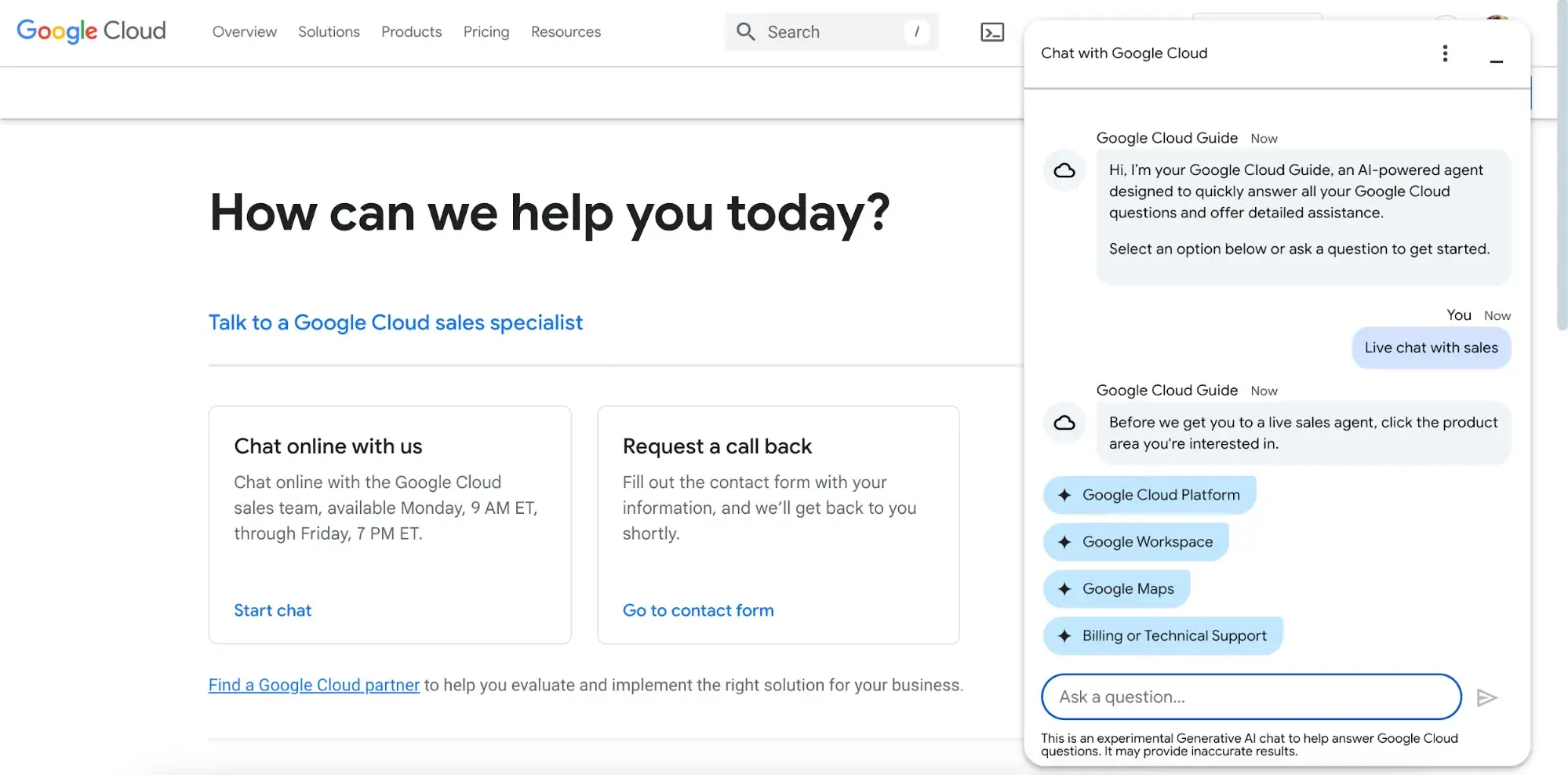
2. AI Call Routing
When a customer calls your customer service line, who directs their call to the appropriate person?
Listening to a long directory list is so 2010, and having someone answer phones and ask how to direct your call (think Pam Beesly in The Office) isn‘t an effective use of your employees’ time. Use AI call routing to improve operational efficiency with intelligent routing.
Customers are asked to describe their reason for calling, and AI systems use interactive voice response (IVR) systems to analyze customer intent and direct them to the appropriate employee. AI call routing reduces hold times and improves agent productivity.
This is a great example of outsourcing a human agent role to AI in a way that improves the customer experience and creates more personalized interactions. Predictive routing won't have 100% accuracy, but it will improve overall contact center response times.
Harpreet Saini, CEO of We Buy Houses in Metro Detroit, shared the results her company has had implementing AI call routing: “Our AI-powered call routing system has been a game-changer, reducing wait times by 40% and boosting customer satisfaction scores. AI has truly revolutionized how we handle inquiries and close deals in the competitive Detroit real estate market.”
3. Chatbots
Chatbots are advanced virtual agents that handle customer inquiries in a conversational tone (AKA conversational AI).
These bots never pretend to be human; that's where customer trust goes to die. Instead, many companies lean into the fun and give their chatbot a nickname. The HubSpot chatbot is named HubBot.
Key features of our free chatbot service include:
- Offering answers to customer FAQs.
- Booking meetings or sales demos.
- Presenting self-service solutions.
- Transferring to an agent.
I’ve found allowing customers to transfer to agents easily is vital to offering a consistent customer experience and building trust. Overall, customers like chatbots — as long as they improve convenience.
Statistic: In one survey, 48% of respondents shared they would interact more frequently with AI if it made the customer experience more consistent, seamless, and convenient.
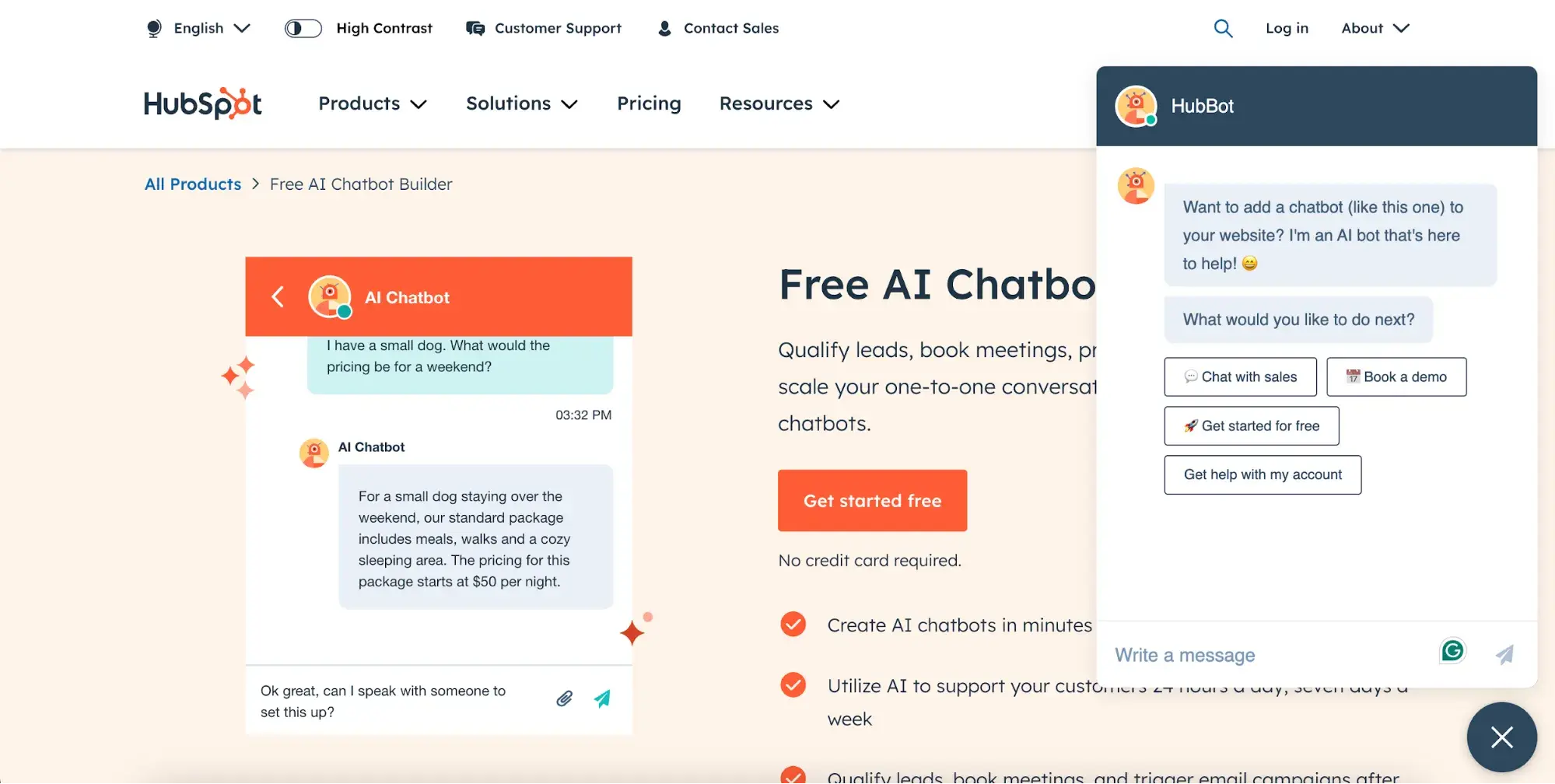
4. Multi-Language Support
Chatbots may be standard contact center fixtures, but multilingual chatbots are less common. Perfect for SaaS companies serving a global audience, training your generative AI model to detect and reply in any language is an incredible asset for a global customer base.
When I asked Canva's chatbot where I could find my billing information in Dutch, it automatically detected which language I was using and generated an accurate response:
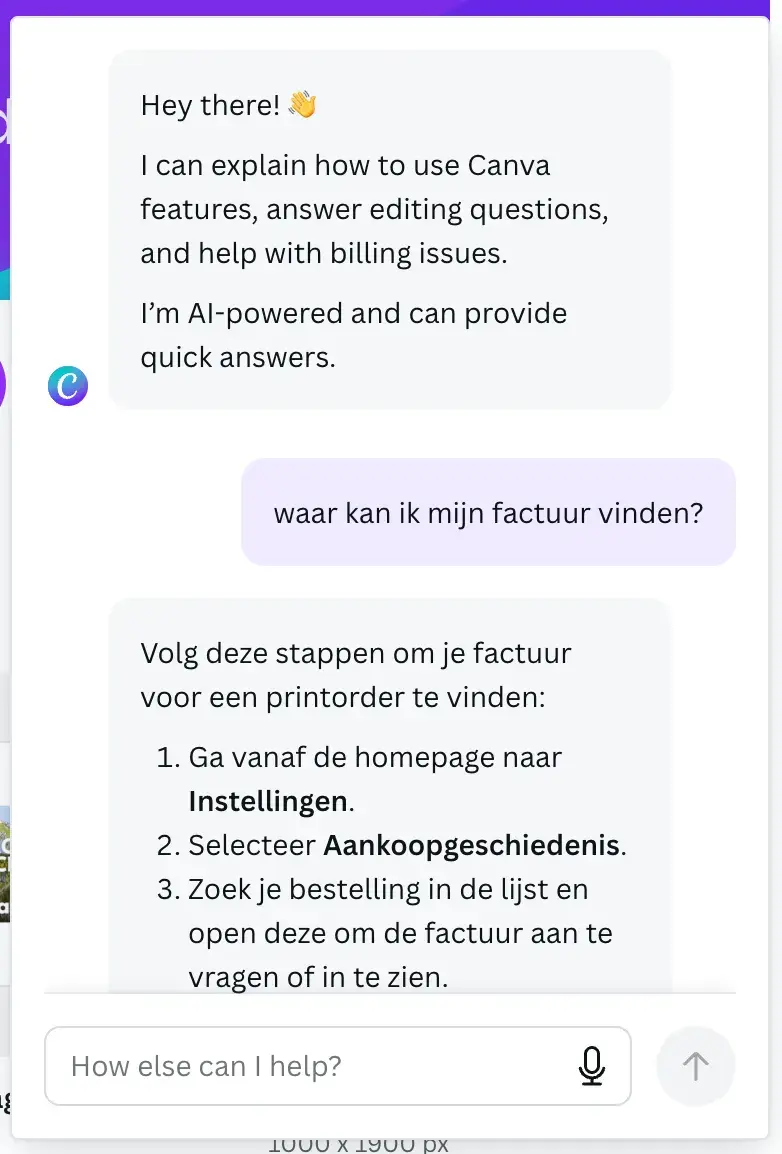
5. Speech Analytics
“This call may be recorded for educational purposes” — we've all heard this disclaimer when calling a customer service phone number (I bet you even read that in a robotic voice in your head!). Call recording has been a contact center staple for a long time, but it got a major upgrade with AI speech analytics.
You can now turn conversations into usable data to:
- Understand customer behavior.
- Monitor agent performance.
- Grasp customer sentiment.
- Improve agent training.
- Identify patterns.
According to leaders, the results are measurable. “Speech analytics enables us to study feedback given by clients in real time, which has led to a 15% improvement in service quality,” shared James Allsopp, CEO of iNet Ventures.
Click to see more real-life examples of companies using AI in customer support.
6. Agent Training
AI isn't just for your customers; contact centers should also be using AI to empower agents. This is a form of internal AI. “Investing in internal AI creates a supportive and efficient work environment,” shared Shennice Cleckley, founder of Melanin Innovations. “This tends to lead to improved employee performance and better customer service.”
Cleckley recommends that companies approach internal AI implementation by:
- Identifying areas for improvement.
- Starting with small-scale pilot projects.
- Investing in user-friendly tools.
- Providing adequate training.
- Continuously monitoring performance for further optimization.
Need ideas for using generative AI for agent training? Use our prompts.
7. Internal Knowledge Base for Agents
Another function of internal AI is using your own AI models to act as virtual assistants to your agents, speeding up agent responses and reducing time spent on calls. Google Cloud's popular contact center AI platform refers to this as agent response “building blocks.”
The AI company Tettra specializes in internal knowledge base development:

8. External Knowledge Base
Knowledge bases are a popular and powerful type of self-service, and AI has provided a major upgrade.
Old search systems used to require an exact match of keywords to help customers. For example, if a user searched “remove background” but the help article they needed used the term “background remover,” their search came up empty.
A more sophisticated search system analyzes user sentiment and offers diverse solutions. In this example from Canva, predictive text appears and offers a wide range of solutions related to the search query.
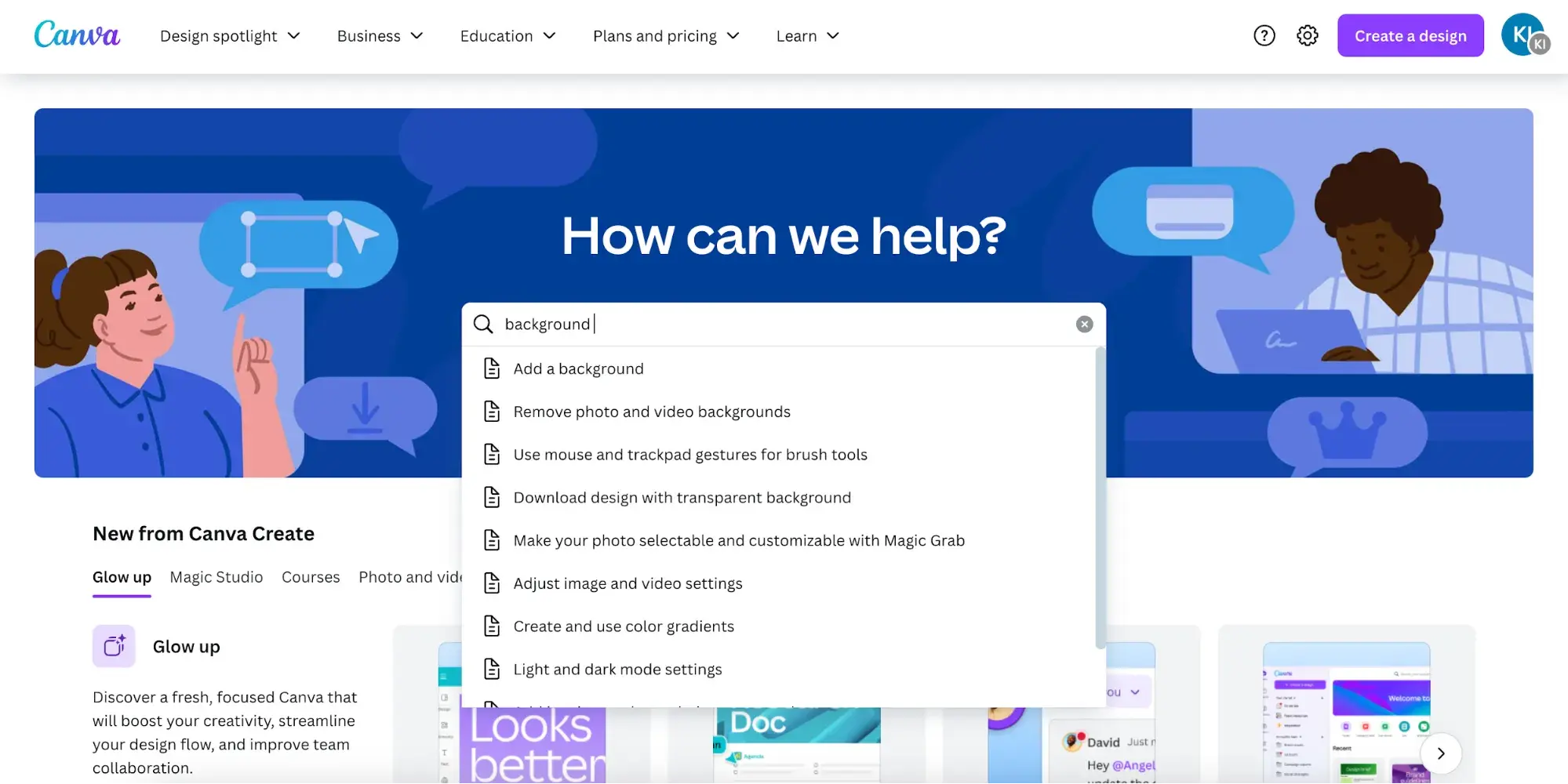
9. Customer Feedback
Are your efforts to make customers happier paying off? You'll never know without feedback. Customers are constantly asked to describe their problems, upload screenshots to a contact form, etc.
Contact center leaders should look for opportunities to make providing feedback as effortless as possible for customers. That's what GreenGeeks has done.
GreenGeeks is my website host, and they provide the best SaaS customer service experience I've ever experienced. Their agents are available 24/7, they respond almost instantly, and always resolve my problem.
What's at the heart of an exceptional customer experience? Listening to what customers want. You can see here how GreenGeeks invites you to select any element on their website and provide targeted feedback:
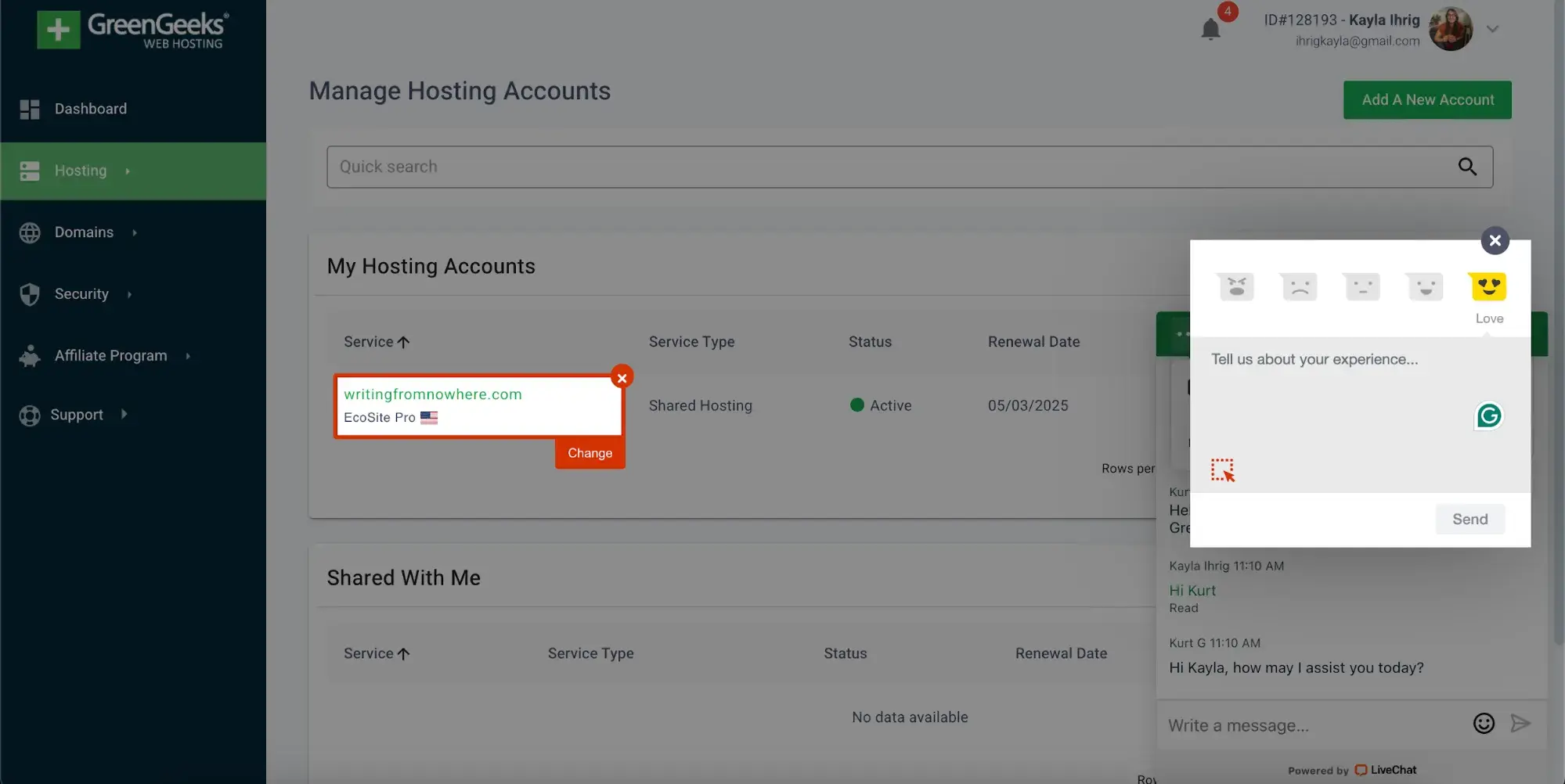
Develop sophisticated customer feedback tools to gather data for your AI models.
How to Implement AI at Your Contact Center
With all of these bells and whistles at your disposal, how do you go about implementing contact center AI? Follow these steps.
1. Define your problem.
I spoke to Ravi Shankar Goli, principal software engineering manager for Microsoft, who has experience using generative AI for customer support systems. He says that step one of implementing contact center AI is identifying which problem you'd like to solve.
"The problem statement is the number one thing you decide before jumping on the AI generator,“ shared Ravi. ”That drives how you want to use the generator." Then, identify your task.
2. Start with a simple task.
A successful AI roll-out is deep, not wide. So, I suggest starting with a single function. Candidates for your pilot program are tasks that are:
- High-volume.
- Repetitive.
- Simple.
Ideas include customer FAQs, order status updates, and call routing.
3. Record data.
To measure the impact of your AI systems, you need to quantify your starting point.
For example, if your goal is to use an internal knowledge base to help agents help customers more quickly on calls, then you need to know how long support phone calls currently take.
Capture your benchmarking data and set a goal of what you'd like to achieve with AI. Then, move on to implementation.
4. Implement your AI tool.
The exact steps for AI deployment in your contact center will vary depending on which task you're tackling first, but the fundamentals of AI implementation are the same:
- Trust: Be upfront with customers and disclose when you're using generative AI solutions instead of human contact.
- Bypass option: Clearly state how customers can move past AI agents and speak to a human directly. This, in my experience, is vital to make sure your site remains accessible to all users.
- Transparency: Disclose how customer data is being gathered.
As AI continues to develop, AI ethics will evolve. Stay up to date with industry standards.
5. Test and refine.
Once your model has collected sufficient data, it's time to test and refine. Fine-tuning allows you to train the AI models on your business needs specifically, instead of using general models that have been trained on the broad spectrum of internet content.
Goli warned that fine-tuning your AI models can be costly. He advises waiting until you have enough quality data before beginning this process.
“Getting quality data can be a tedious task — it requires provisioning data, cleaning up data, and formatting it as per the requirements,” Ravi shared. “Start small, monitor the expectations, and adjust the fine-tuning as needed to make sure it stays accurate.”
This isn't just a one-time investment, either. “Some companies may need to fine-tune models quarterly or yearly to reflect significant changes in the market or customer behavior,” shared Ravi.
Using AI to Serve Your Customers
AI is famous for helping automate repetitive tasks, but can it even automate your customer communication? It can certainly help.
I‘m personally relieved to know that the future of customer support doesn’t lie completely in the hands of AI. No AI-driven contact center should outsource their human agents. Instead, it can increase agent efficiency and support the entire customer journey. How will your team and customers benefit?
Artificial Intelligence



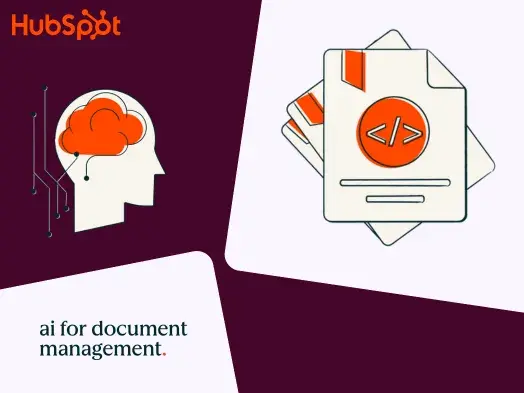

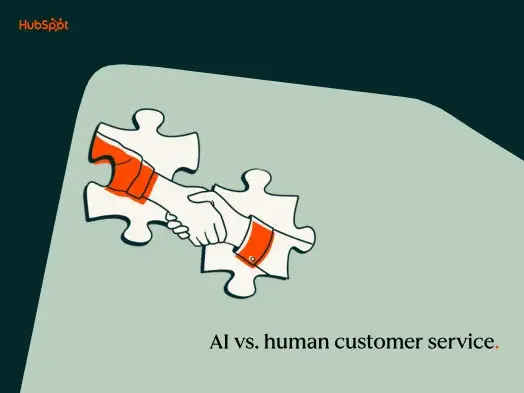

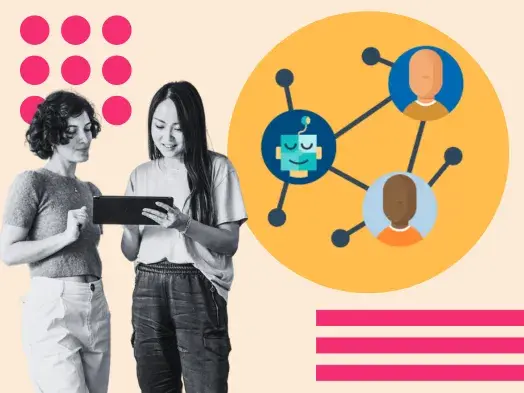
![How AI Can Unlock Customer Insights [+Expert Tips]](https://53.fs1.hubspotusercontent-na1.net/hubfs/53/customer-insights-ai-1-20241101-2082956.webp)
